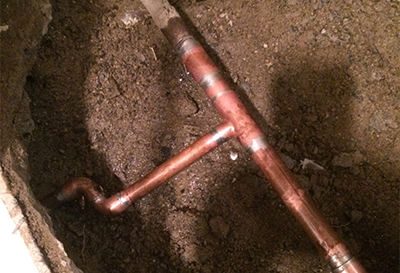6 Ways to Locate Hidden Water Leakages in Your House
6 Ways to Locate Hidden Water Leakages in Your House
Blog Article
We've unearthed this post involving Top leak detection hacks directly below on the internet and accepted it made sense to relate it with you on this page.

Early discovery of dripping water lines can reduce a potential calamity. Some small water leaks might not be visible.
1. Examine the Water Meter
Examining it is a surefire means that aids you find leakages. If it moves, that suggests a fast-moving leak. This indicates you might have a slow leak that might also be underground.
2. Examine Water Consumption
If you spot unexpected modifications, regardless of your consumption being the exact same, it suggests that you have leaks in your plumbing system. A sudden spike in your expense shows a fast-moving leak.
At the same time, a stable rise each month, even with the exact same behaviors, shows you have a sluggish leak that's additionally slowly intensifying. Call a plumber to completely check your residential or commercial property, especially if you really feel a cozy location on your flooring with piping below.
3. Do a Food Coloring Test
When it comes to water intake, 30% comes from commodes. If the shade in some way infiltrates your bowl during that time without flushing, there's a leakage in between the storage tank as well as bowl.
4. Asses Exterior Lines
Do not forget to check your outside water lines too. Test spigots by connecting a yard hose. Must water seep out of the connection, you have a loose rubber gasket. Replace this and make certain all connections are tight. If you've obtained an automatic sprinkler, it will certainly aid get it professionally analyzed and also kept each year. One small leak can waste lots of water and also increase your water bill.
5. Examine the circumstance and evaluate
House owners must make it a habit to inspect under the sink counters as well as even inside closets for any type of bad odor or mold and mildew growth. These 2 warnings suggest a leak so timely focus is called for. Doing routine inspections, also bi-annually, can save you from a major problem.
Check for discolorations and also damaging as the majority of home appliances and also pipes have a life expectancy. If you think leaking water lines in your plumbing system, don't wait for it to intensify.
Early discovery of dripping water lines can minimize a potential disaster. Some tiny water leakages might not be noticeable. Examining it is a proven way that helps you find leaks. One tiny leak can waste loads of water as well as surge your water expense.
If you think leaking water lines in your plumbing system, do not wait for it to escalate.
How to Know If Your Home Has a Hidden Leak
Water Meter Reveals Inexplicable Water Usage
If you’d like to test whether or not there’s a leak somewhere in your home, you can do this using your water meter. Here is how to conduct the test:
Don’t use any water in your home for at least 30 minutes; this also means not turning on faucets or water-using appliances.
Go outside, and check your water meter for activity.
If your water meter shows that there was activity, even though no one was using any water, this proves that there is a leak in your home.Visible Mold or Mildew Growth
Leaks behind walls create moist, dark environments that allow mold and mildew to grow and thrive. Eventually, you might see mold growth forming on the wall closest to a hidden leak.
If mold is growing in an area that receives a high amount of moisture, such as a bathroom, it may simply be an indication that better ventilation is needed. However, if you see mold growth on a wall or the ceiling in an area where you would not expect, you probably have a hidden leak.
Musty, Mildew Odor
Sometimes you might not be able to see the mold or mildew that is growing as a result of a leak. However, the smell can give the problem away just as easily. If you catch a whiff of something musty, there’s a good chance that old water is collecting somewhere in your home that you can’t see.
Stained/Warped Walls, Ceilings, or Floors
When your home soaks up water, a variety of red flags can become visible, including ceiling stains, bubbling drywall, warped walls, and sagging floors. While these issues can be caused by excess humidity, they can also be signs that a pipe or plumbing connection has started leaking behind your walls.
Inexplicably High Water Bill
After a while, you get a general sense for what your water bill should be. If you own a pool or sprinkler system, your bill will tend to be higher during summer. However, if you receive a water bill that seems especially high, and you can’t figure out what caused it, then you may have a hidden leak somewhere that’s increasing your bill.
https://www.plumbingjoint.com/blog/2019/july/how-to-know-if-your-home-has-a-hidden-leak/

We hope you enjoyed our part on Locating water leaks. Thank you so much for taking time to browse our piece of content. For those who enjoyed reading our post please do not forget to share it. I recognize the value of reading our article about Hacks to detect leaks.
Report this page